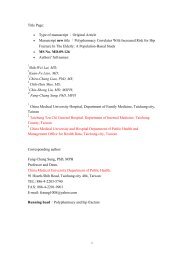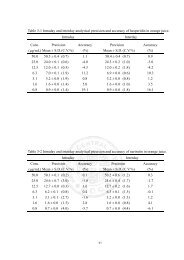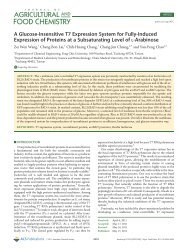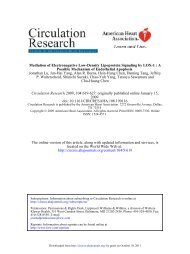Culinary Narratology in Everyday Life: Foodways and Identity ...
Culinary Narratology in Everyday Life: Foodways and Identity ...
Culinary Narratology in Everyday Life: Foodways and Identity ...
You also want an ePaper? Increase the reach of your titles
YUMPU automatically turns print PDFs into web optimized ePapers that Google loves.
<strong>Cul<strong>in</strong>ary</strong> <strong>Narratology</strong> 6<br />
re-formation of cultural identity <strong>and</strong> the immigrant bodies through the rituals of eat<strong>in</strong>g <strong>and</strong><br />
cul<strong>in</strong>ary praxis <strong>in</strong> their everyday life <strong>in</strong> diaspora. In analyz<strong>in</strong>g immigrant foodways,<br />
Mannur po<strong>in</strong>ts out, the cul<strong>in</strong>ary narratives <strong>in</strong> the studies of race <strong>and</strong> gender associated with<br />
Asian immigrant experiences have become <strong>in</strong>dispensible with regard to “how the depiction of<br />
ritualized everyday activities might be a w<strong>in</strong>dow of underst<strong>and</strong><strong>in</strong>g <strong>in</strong>to the lives of colonized,<br />
subjugated, or otherwise marg<strong>in</strong>alized subjects” (“<strong>Cul<strong>in</strong>ary</strong> Fictions” 57). Though<br />
encounter<strong>in</strong>g distress of nostalgia, both of Lahiri’s protagonists use cul<strong>in</strong>ary practices as<br />
either techniques of resistance or technologies of self to articulate their everyday perspectives<br />
towards identity formation <strong>in</strong> diasporic life.<br />
Mrs. Sen unwitt<strong>in</strong>gly enhances the racialization of her ethnic body by means of her<br />
obsession with authentic Bengali foodways. Meanwhile Ashima, by her gradual<br />
compromises between American <strong>and</strong> Indian cultures <strong>in</strong> everyday life, ultimately forms a<br />
negotiable identity <strong>in</strong> diaspora through the practice of her native foodways. In a way, both<br />
female protagonists articulate themselves by perform<strong>in</strong>g dist<strong>in</strong>ctive cul<strong>in</strong>ary practices, thus<br />
signify<strong>in</strong>g female immigrants’ either defy<strong>in</strong>g or negotiat<strong>in</strong>g identity <strong>in</strong> diaspora through<br />
perspectives of everyday life. This paper aims at elaborat<strong>in</strong>g how the South Asian female<br />
immigrants utilize ethnic foodways, a dimension of bodily habitus <strong>in</strong> everyday life, to<br />
construct their own sense of racialized subjectivity, to mitigate their often difficult lives as<br />
female immigrants, <strong>and</strong> thus to generate a certa<strong>in</strong> degree of agency <strong>in</strong> the diasporic context.<br />
Immigrant Women’s Alienated Bodies <strong>and</strong> <strong>Cul<strong>in</strong>ary</strong> Nostalgia <strong>in</strong> “Mrs. Sen’s” <strong>and</strong> The<br />
Namesake<br />
In most of Lahiri’s narratives, first generation South Asian female immigrants are<br />
portrayed as figures deprived of agency, because their move to the United States was simply a<br />
matter of accompany<strong>in</strong>g their husb<strong>and</strong>s. Different from the “much-touted highly educated,<br />
urbanized professional” South Asian male immigrants, who consider the West as a source of









